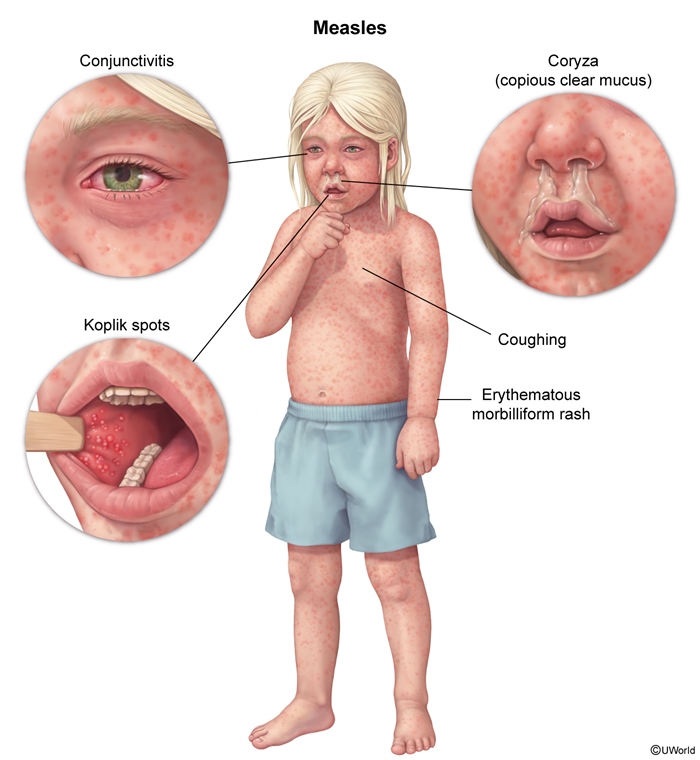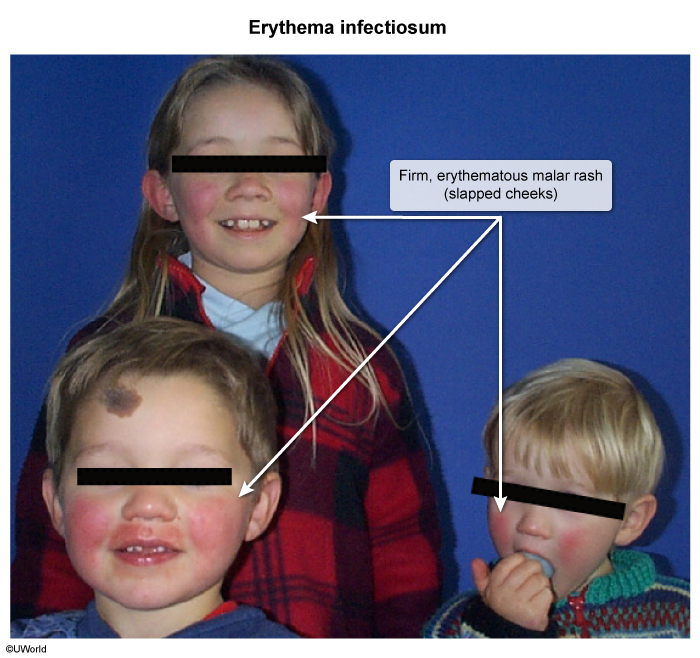Rubella Infection
Article Sections
Introduction
Rubella is a vaccine-preventable viral illness caused by the rubella virus. Patients develop a generalized maculopapular rash, often accompanied by mild fever and lymphadenopathy. Rubella is generally self-limited; however, neonates with congenital rubella infection are at risk for significant morbidity and mortality.
Pathogenesis
The rubella virus is transmitted via respiratory droplets. The virus adheres to and replicates within the nasopharynx and regional lymph nodes, and viremia occurs 5-7 days later, disseminating the virus to various tissues. Viral shedding occurs 1 week before and 2 weeks after the rash, which appears with the formation of neutralizing antibodies.
Because the vaccine is highly effective, being unimmunized is the primary risk factor for infection. Similarly, living in a geographic area with low vaccination rates is also a risk factor.
Continue Learning with UWorld
Get the full Rubella Infection article plus rich visuals, real-world cases, and in-depth insights from medical experts, all available through the UWorld Medical Library.
Figures

Images
